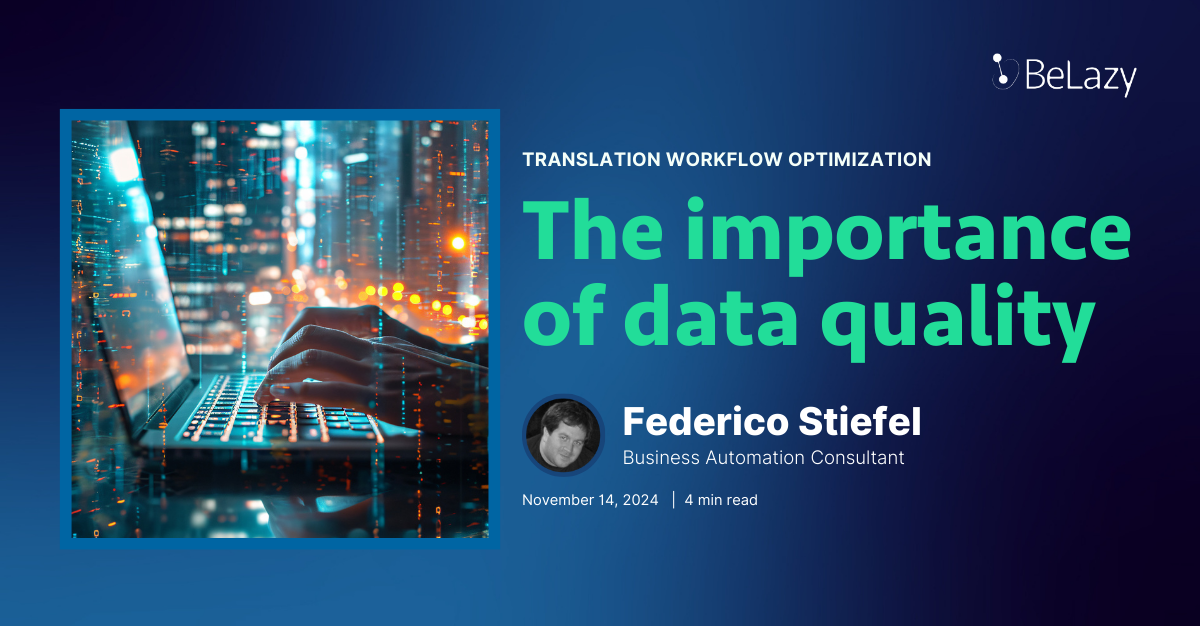TLDR summary:
BeLazy could support a myriad of systems, however, prioritizing is never easy. So to make sure we match market demand with our development efforts, we have decided to launch the BeLazy task forces: groups of current and potential BeLazy users that establish the business requirements of certain technology development — integrations with new systems in most cases — and pre-finance it. This initial payment can be later used as credit for using BeLazy.
Read on to explain why we decided to support task forces and prioritize their requests.
Developing a comprehensive integration platform is a gargantuan task, mainly because companies use so many different systems to receive and manage projects. According to the Nimdzi Technology Atlas, there are more than 660 individual products in the translation industry. This year’s edition identified 28 translation management systems for end buyers, 33 translation business management systems, and 35 localization systems for developers… Out of all these, there are around 15 major translation management systems, 5 or 6 widely-used developer-oriented localization systems, 6 to 8 popular business management systems. And a plethora of vendor portals are not even mentioned in the Atlas!
How on earth can a team of fewer than ten people address all of this?
- The first one is our public API for vendor portals. So if you have your vendor portal or TMS, you can push projects into BeLazy using this API. BeLazy is not yet the de facto standard for transaction automation, but we are leading this trend. We believe that translation companies that care deeply for technology can easily integrate and automate processes with just a single integration to BeLazy. This will probably be the main way in the future.
- The second way is offering integration services for technology companies that are interested in getting a good entry point into the language service provider (LSP) market.
- The third one is getting the users together and this is what this blog post is about.
The partnership company
We like to refer to BeLazy as a partnership company. Okay, every company in the world likes to refer to themselves as a partnership company, but the truth is we have built our model on partnerships. By involving the technology partners in the business equation, we help buyers and sellers work together better, rounding up every interested party in a workflow. Enterprises buying translation often have a somewhat alienated stance from their sellers, and as everybody wants to sell – also the companies that need to buy – everybody’s technology roadmap is kind of skewed towards their customers.
Our secret is quite simple: we sell our services to those who sell translations — the single language vendors (SLV) who sell to the bigger multilingual vendor (MLV), or the MLVs that sell to the enterprise buyer — and we partner with those who buy translations to make the life of those who sell it easier, for the benefit of both. Ultimately, this means that we often have a closer bond with your customer than what you do: they talk to us in confidence because we don’t want to sell to them.
Our purpose is to make the life of suppliers better and organize their processes. Doing so requires understanding a somewhat peculiar coincidence: whenever there is greater automation both parties win – sellers and buyers -; but if the buyer’s processes are messy, the suppliers’ life always ends up being more complicated. It should be the buyer’s interest to improve their processes towards the suppliers. More organization leads to efficiency gains and they ultimately mean the seller doesn’t need to charge the buyer for non-value-add activities. Yet buyers are usually unaware of the things they should be doing better to support their suppliers and often don’t know how to allocate the resources for it.
Join the task force
The Belazy task forces are intended for different suppliers working in the same system for the same customer or customers who work similarly. The main advantage is that the technology platform being used automatically introduces process into the management of projects, and the number one reason for convoluted processes in supply chains is the inability of the MLVs to include a certain workflow of their customers into the system they use.
The use of technology (workflow automation) reduces the number of possible workflows, but in many cases, more than one workflow is still possible. Let’s say you work for a customer with memoQ server. This is a robust tool used by many companies but, in reality, there are just a couple of potential workflows: the web interface, checking out projects locally, and server-to-server integration. Most translation companies spend valuable project management time when they receive a project via their customer’s memoQ server: they have to create it in their business management system (BMS), then either download a project package or reassign it to the translator or reviewer in the customer’s server, and finally deliver the project. There could be some variations but not too many. Technically they could do other things, but they don’t.
A task force can be organized to address the following scenarios in BeLazy that are currently not addressed:
A new translation management system
A new vendor portal
Multiple vendors to the same (mostly) LSP team up to automate the work that comes from these LSPs. For example, we have seen several companies working for thebigword or United Language Group, but we don’t have an integration with their system currently. Outsourcing portals of public organizations can also be counted here (e.g. different bodies of the European Union).
A new business management system
Do you all use Projetex and want the system to integrate into multiple TMSes and vendor portals via BeLazy? Team up and we’ll invite the Projetex team into the discussion.
An improvement of an existing integration
A workflow at a customer
How does a task force work?
Anybody can initiate a task force but the first stage is all about gauging interest. We analyze your business requirements – it could be that you want an XTM integration or integration with Netflix’s or Facebook’s own toolset – and then calculate how much effort and resources are required.
In order to participate you need to invest some time (a couple of online meetings a month) and some money (from as little as 1000€ to up to 10000€/20000€). We can only work with you if you are ready to make contributions, which keep us moving forward. You may bring some other companies with similar problems so we can kick it off earlier, but once a task force is initiated, we also actively recommend participation to companies we know could be interested.
- Preparation stage: Initial idea – Member search – Task force kick-off
- Task force stage: Discussion – Goal setting – Commitment – Solution research – Discussion of the solution – Commitment – Delivery – Testing and onboarding – Fine Tuning
Each task force has a clear goal that is discussed by the members in a joint meeting, where the working method and a deadline are also pinned down. Then comes the commitment step, which is about understanding how we can address this goal and what kind of development is needed. After checking with the task force members, we define a budget to problem-solution research. This investment is used to finance the tests and all the conceptual planning that is required to understand what’s the best way to address the problem. If you don’t agree with the common goal, you are entitled to leave the task force before committing to the research period.
After this first stage is concluded, we report back to each task force member to communicate what’s the possible solution and the development effort involved. Any task force member could decide to opt-out at this point as well.
It’s important to make it clear that this is an actual investment and not a cost. The IP we develop will be owned by BeLazy, but we offer you usage credit up to the amount you paid for.
Important note: Given that most of our investment now goes on developing new connectors, from a financial perspective we cannot afford to grant you this payback as service immediately. Instead, we’ll credit this amount after a year.
Need support for a new system or help with a business problem?
You can easily join our existing task forces or contact us to initiate a new one. You can explain the problem to us and if you feel comfortable already at this point, share what budget you thought about for this. This helps us kick-start task forces faster because we know earlier how many companies are needed for development to start. It will probably take a couple of weeks until the task force kicks off, but once we identified enough partners to make it work, the process speeds up. Generally, you can expect solutions within 2-3 months from the moment the task force regular meetings start.







